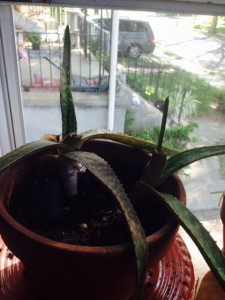“Jealousy feels like everybody in the world getting ice cream brought to them on the couch and you get none” – Olivia, age 7
Writing teachers must be doing an incredible job. The young people I see in therapy are masters of descriptive metaphor when it comes to describing the challenges they face in life and in how they might overcome them.
 Recent brain research has uncovered some of the potential healing benefits of thinking in metaphor. A 2008 study found that the sensory areas of the brain are activated when we hear a metaphor. Imagining yourself to be as ‘cool as a cucumber’ might send soothing signals to your brain in a stressful situation. Metaphors can bridge the mind/body gap, allowing us to understand our experiences and connect to our physical sensations, which can help us reduce stress.
Recent brain research has uncovered some of the potential healing benefits of thinking in metaphor. A 2008 study found that the sensory areas of the brain are activated when we hear a metaphor. Imagining yourself to be as ‘cool as a cucumber’ might send soothing signals to your brain in a stressful situation. Metaphors can bridge the mind/body gap, allowing us to understand our experiences and connect to our physical sensations, which can help us reduce stress.
Therapists have long understood the benefits of metaphor in helping clients shift perspective and unlock old ways of thinking. Metaphors can help a therapist and client visualize a problem more clearly and envision new solutions that might be difficult to imagine when one is focused on the immediate context and detail.
Olivia struggles with sharing her mother’s attention with her twin brother. Her comment above allowed us to talk about her feelings in a way that was removed enough from the anger she felt towards him that she could contemplate different possible ways of dealing with them.
ME: And who brings the ice cream to everyone else?
HER: The mothers!
ME: And what do you want to tell all those mothers?
HER: I want some ice cream too!!
ME: And what happens if you get some ice cream?
HER: I’m not so mad at the rest of them and it’s fair.
From here, we were able to talk more about how it felt when her brother was getting more attention than she was and she was able to feel a sense of control and calm that wasn’t accessible to her when she was angry at her brother.
Children aren’t the only ones who can benefit from visualizing through metaphor. Jarvis is a self-described worrier.
“I’m always focused on the worst possible outcome. I can’t even enjoy a night out because I’m thinking about what it will be like if things don’t go well.”
“Sounds like you’re waiting for the other shoe to drop.”
“Yes that! Exactly”
“Maybe there’s only one shoe.”
I asked Jarvis to picture one shoe hanging above the floor. Then I asked him to see it fall to the ground and to imagine looking up again to see no other shoe. “What is it like to know there isn’t a second one waiting to fall?” I asked. He told me he felt he could keep his eyes focused forward. He said he felt his chest loosen and his shoulders relax a bit. His homework would be to call up the image of the shoe whenever he started to imagine what might go wrong and see if that helped him stay a little more focused on the present. Two weeks later, he reported being much more able to enjoy himself, though sometimes he confessed to imagining the second shoe.
Think of a problem you are currently facing. How might you use metaphor to describe it? What metaphors are you already using and not aware of (Are you painted into a corner? Are you walking on a tightrope?) Rather than focus on the details of your problem, imagine the metaphor as literal. Can you see yourself holding an umbrella to balance you across the high wire or finding a creative way across the painted floor?
Creating a visual picture can help you become more flexible in dealing with challenges and may reduce the physical symptoms of anxiety and stress you’ve been experiencing.



